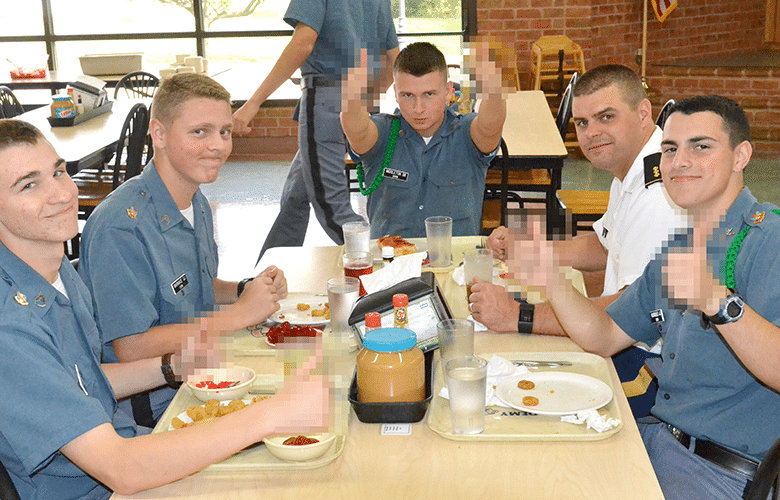


It's almost a natural instinct when we're in a group and someone is taking a photo of us, for us to make some sort of hand gesture or sign—a big smile and a thumbs up, or a hand raised with an index finger proclaiming, "We're number one!" As humans, we communicate not only with words but also with the unspoken language of gestures and body language.
But what happens when the gestures we use every day can be interpreted in offensive ways in other cultures?
It's important to be mindful of these differences, especially for students attending a boarding school that attracts students from around the world. We must also be careful not to use hand gestures that may actually be gang signs in some parts of the USA or that could be interpreted as such by others.
In this article, we'll explore some common hand gestures used in America—and that we may have permitted in our photos in the past—that we have since learned may have offensive meanings elsewhere. Our goal is to avoid any embarrassing misunderstandings when we are posting photos online, and for this reason we are asking that our cadets refrain from making any hand gestures in the photos we take that are intended for publication.
In America, the "OK" sign is a universal symbol of approval. But in other countries, such as Brazil, France, and Germany, the same gesture can be considered offensive and can mean "you're a big zero" or "you're a real loser." Talk about a thumbs-down! Additionally, in some parts of the USA, such as Los Angeles, the "OK" sign has been co-opted by gangs as a symbol of affiliation. So, let's not use the "OK" sign in our photos anymore.
Holding up the index finger is another gesture that can be misinterpreted in different cultures. In many Western countries, holding up the index finger signifies "number one" or "first place." However, in some cultures, such as Greece, Russia, and the Middle East, holding up the index finger is considered rude and can be interpreted as an insult or a threat. In these cultures, the gesture is equivalent to giving someone the middle finger in America. Therefore, it's important to be aware of the cultural differences and avoid using this gesture when communicating with people from different backgrounds.
Thumbs-up may mean "good job" or "well done" in America, but in parts of the Middle East and South Asia, the same gesture can be interpreted as an insult. It's like giving someone the middle finger without realizing it – ouch! In some parts of the USA, such as Chicago, the thumbs-up gesture can also be interpreted as a gang sign. So, let's avoid using this gesture in photos from now on.
In America, the "V" sign with the palm facing outward is a sign of peace or victory. But in the UK, Australia, and New Zealand, the same gesture with the palm facing inward can be considered offensive and mean "up yours." Yikes!
Rock on! The "horns" gesture, which involves extending the index and pinky finger, is a common hand gesture in America, especially in the heavy metal and rock music scene. But in many countries, such as Italy, Portugal, and Brazil, the same gesture can be interpreted as an accusation of infidelity. This gesture is also used by some gangs in the USA, so we should avoid using it in photos altogether.
While the above gestures and nonverbal communication cues are commonly known to cause offense across cultures, there are certainly many more that exist. For example, pointing with your index finger is considered impolite in many cultures, as it can be interpreted as rude or accusatory. In contrast, in some cultures, such as parts of Africa, it is common to point with the lips rather than the finger. Additionally, handshakes, which are common in many Western cultures as a form of greeting, may not be appropriate in some cultures where physical touch is discouraged, such as in parts of Asia or the Middle East.
In a diverse environment like a boarding school that attracts students from many countries around the world, it is crucial to be aware of these cultural differences when communicating with people from different cultural backgrounds. Students should be mindful of the gestures and nonverbal communication they use and avoid posting photos on the internet that may be offensive outside of the USA. By being aware and respectful of these cultural differences, we can build stronger relationships and avoid misunderstandings in our interactions with people from different backgrounds.